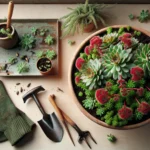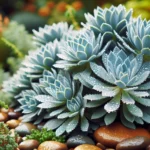Introduction to Sedum Dazzleberry
Welcome to the enchanting world of Sedum Dazzleberry, a gem in the tapestry of groundcover plants that will transform your garden into a vibrant sanctuary. This robust sedum variety has carved out its niche in the hearts of gardeners for its ability to flourish with minimal fuss while providing a dazzling display of color and texture.
Imagine a carpet of deep purplish-red foliage that sets the stage for blooms of vivid pink flowers. That’s Sedum Dazzleberry for you—a plant that not only captures the imagination with its beauty but also endears itself to gardeners for its undemanding nature. It thrives in tough conditions where others would wither, asking for little more than a spot in the sun and well-drained soil.
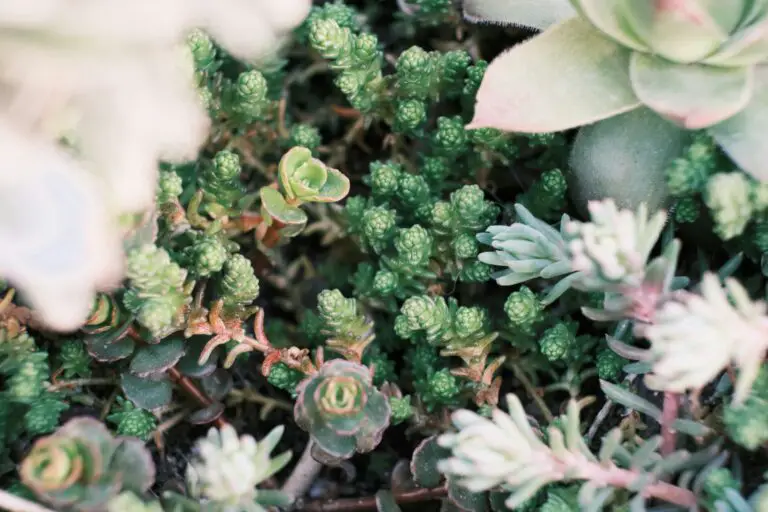
Strolling through a garden adorned with Sedum Dazzleberry, one can’t help but appreciate its growth habits. This sedum, part of the diverse stonecrop family, spreads out effectively, making it an excellent cover to protect soil and suppress weeds—earning its keep with year-round interest. For anyone eager to understand the basics of caring for these robust plants, resources like World of Succulents offer a treasure trove of gardening knowledge.
From personal patios to large botanical installations, Sedum Dazzleberry stands out boldly among the greenery. Landscape designers often use it to edge pathways, create living mosaics, or simply add a splash of color to rock gardens. Home gardeners delight in its ability to adapt to various planting scenarios, making it a trustworthy choice for novices and experienced green thumbs alike.
Botanical Profile: Understanding Sedum Dazzleberry
Let’s go on a botanical journey with a seductive little number known as Sedum Dazzleberry! This particular Sedum, a proud member of the Stonecrop family, charms with its eye-catching foliage and resilient nature. But don’t be fooled by its delightful nickname; we’re diving deep into its scientific roots to understand why this plant has become such a coveted gem in gardens around the globe.
Part of what makes Sedum Dazzleberry stand out from the crowd is its scientific classification. Nestled within the Crassulaceae family, our Dazzleberry is a close cousin to popular succulents known for their water-storing prowess. As a perennial, it masterfully harnesses its energy to return each year with a renewed zest for life.
What’s truly electrifying about this variety is its evolution. Like all Stonecrops, the Dazzleberry has adapted to thrive in conditions that would leave other plants gasping for breath. Imagine a crevice in a rock wall, soil that other plants would deem unworthy – it’s there that the Dazzleberry gleefully sets roots and spreads its succulent leaves to bask in the full glory of the sun.
Much like an artist’s palette spilling over with vibrant hues, Sedum Dazzleberry lights up any garden space with its dazzling berry-red blooms. Its compact, low-spreading habits make it an architect’s dream for creating living tapestries or jazzing up the front of a sunny border.
One must admire the tenacious spirit of this adaptable groundcover. It champions sustainability, needing little more than a sunny spot and a touch of moderation in watering to unfurl its magic. This tenacity is a lesson for us all – resilience is not only about enduring but finding a way to thrive with vivacity.
As you explore these enchanting plants, you might find inspiration for creative arrangements or companion plantings that highlight their unique beauty. To bring your garden oasis to life, combine Sedum Dazzleberry with other drought-tolerant plants for a symphony of low-maintenance, high-impact design.
For an in-depth look at how to care for this incredible species, check out this informative video:
Ideal Growing Conditions for Sedum Dazzleberry
So you’ve set your heart on the glorious Sedum Dazzleberry, a true jewel among groundcovers with its vibrant hues! To transform your garden into a lush oasis, let’s chat about crafting the perfect environment for your Sedum Dazzleberry to thrive. Picture this: a bedazzling sea of magenta blooms, soft succulent leaves, and all the pollinators in the neighborhood buzzing with delight—you can make this happen!
Let There be Sunlight!
First things first: Sedum Dazzleberry adores basking in the sunshine. It’s like the sunbather of your garden, reveling in at least six hours of sun-kissed glory daily. The more, the merrier because that’s when it puts on its most magnificent show. Just think of it gallantly standing in your garden, soaking up those rays, preparing to dazzle!
Soil: It’s All About the Drainage
Next up is soil, and here’s where you’ll want to play matchmaker. Sedums are all about the “drain game.” They crave well-draining soil like poetry needs rhythm. If you’ve got heavy, compact ground, fret not—just amend it with some coarse sand or fine gravel. And if you’re keen on extra tips on sedum-friendly soil, those fine folks at The Spruce have your back.
The Climate Factor
Clime is key. While these succulent beauties are tough as nails in zones 3 through 9, they have their preferences, you know? Heat and humidity? No sweat (literally). Chilly days? They can shoulder the frost too. But they’d rather pass on the soggy winter soil that could make them feel under the weather.
Real-Life Scenario
Imagine you’re in your garden, watching your Sedum Dazzleberry against a backdrop of green. There, amid your own slice of paradise, you feel the satisfaction that comes from creating the ideal setting. Just look at this guide I stumbled upon—it’s like a storybook for your gardening journey.
Remember, Less is More
When it comes to care, think of these sedums as the low-maintenance friends in your life. You won’t need to fuss over them with extra watering or fertilizing. In fact, overdoing either is like double texting—they won’t appreciate it. Give them room to breathe, and they’ll return the favor with a flourish.
Now, grab a cup of whatever you fancy, and check out this insightful video that sheds light on the charm of the sedum family and how to cater to their needs.
Planting and Propagation Techniques
Invigorate your garden with the rich, raspberry-red hues of Sedum Dazzleberry! This low-grower is a must-have for creating a vibrant garden tapestry. Let’s explore the best ways to plant these jeweled beauties and multiply your dazzle with propagation secrets.
First Steps: Groundwork
Before you jump into planting, ensure your garden beds are ready to welcome these resilient yet delicate groundcover stars. Work the soil until it’s loose and crumbly, enriching it with organic compost if necessary. Remember that Sedum Dazzleberry thrives in well-draining conditions; consider raised beds or mounds if your site tends to retain moisture.
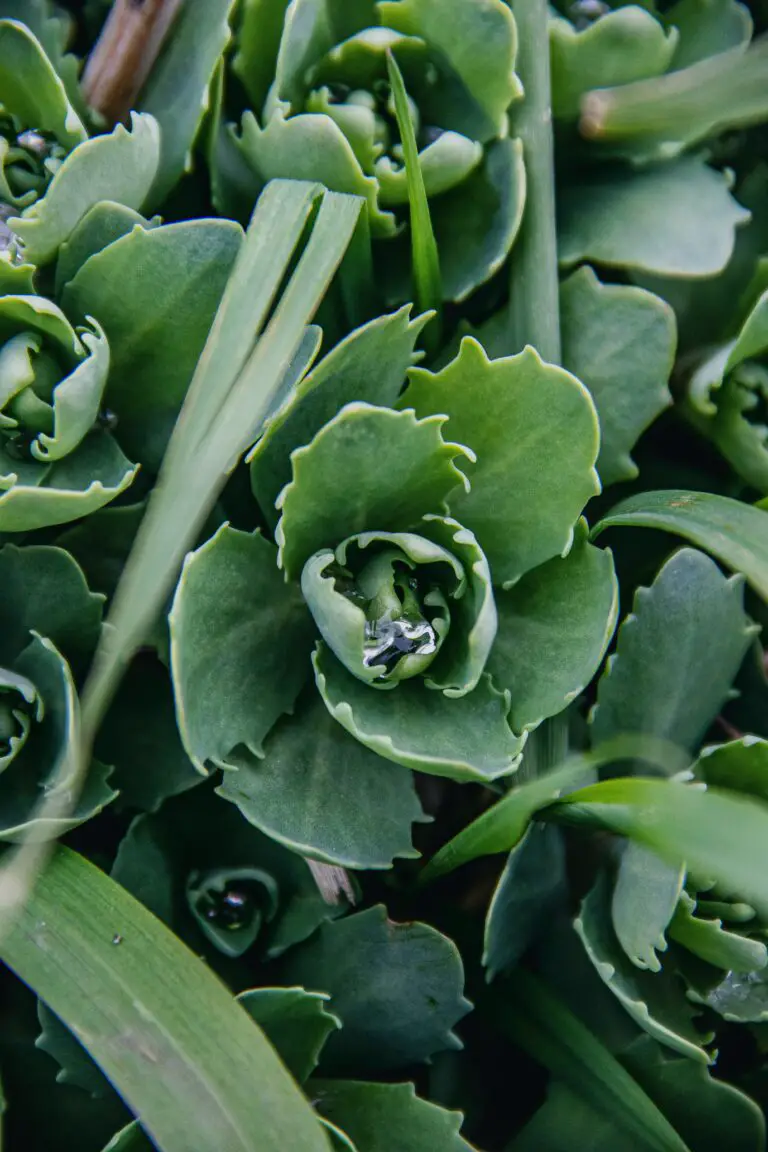
Sedum Dazzleberry Planting Protocol
When planting Sedum Dazzleberry, space is critical. Aim for about a foot apart to give each plant ample room to spread its succulent foliage. Dig a small hole, just deep enough so the root ball is level with the surrounding soil. Backfill gently, pressing down to eliminate air pockets. A thorough initial watering will help settle the soil, but take care not to overdo it in the future—Sedum Dazzleberry can handle the dry spell!
Propagating Panache
Propagating this seductive sedum is like unlocking a cheat code for garden expansion. Seeds, cuttings, or division—choose your weapon. Snipping a few healthy stems and poking them into gritty soil can yield new plants with surprising ease. For a hands-on approach, gently split larger clumps after a few years to give them renewed vigor and create additional dazzle spots.
Ensuring establishment in your garden means consistent attention during the first few weeks. A little love goes a long way, and soon you’ll see your Dazzleberry spreading its jeweled carpet across your garden. Be adventurous and pair it with contrasting foliage or neighboring succulents like Crassula for that designer look!
Maintaining the Magic
Once established, Sedum Dazzleberry is almost self-sufficient. However, during the first growing season, keep the soil consistently moist to encourage strong root development. As it matures, it’s drought-tolerant nature takes over, letting you relax as your sedum spectacle requires minimal intervention. Just keep an eye out for weeds that seek to encroach on this hardy beauty’s territory!
Now, armed with these planting and propagation techniques, you’re all set to create a garden oasis that’s the envy of the neighborhood. Sedum Dazzleberry’s vibrant allure is just the beginning of a year-round, ever-changing outdoor canvas. Let the planting begin!
Routine Care and Maintenance
Let’s dive into the world of the Sedum Dazzleberry, where keeping your gardens splashed with vibrant color is surprisingly straightforward. Imagine your outdoor space as a blanket of rich, fuchsia blooms—your very own garden oasis, and it’s all thanks to the effortless charm of this hardy groundcover.
Perfecting the Water Wave
Watering your Sedum Dazzleberry is akin to hitting the refresh button on a sultry summer day—it should be just enough to quench its thirst. Envision a light sprinkle, enough to soak the soil but never to leave the roots drenched. Overwatering is the nemesis of many a garden treasure, and our low-maintenance Sedum is no exception. Think drizzle, not deluge, and your Dazzleberry will continue to bedazzle with minimal fuss.
Fertilizing: A Light Touch
When it comes to nourishment, Sedum Dazzleberry isn’t a greedy guest at the garden party. In fact, overfeeding can lead to spindly growth, stealing away that luscious, compact charm. If feeding is on the menu, a light sprinkle of slow-release fertilizer is the perfect appetizer at the start of the growing season. It’s like that pinch of spice in your favorite dish—just enough to enhance, not overwhelm.
A Snip Here, a Trim There: Pruning Practices
Now, let’s talk pruning. Such a sculptor’s task doesn’t have to be a masterpiece effort with Sedum Dazzleberry. A casual snip to remove any spent flowers or unruly stems is like giving your Sedum a refreshing new haircut. This mindful trim not only keeps your groundcover looking sharp but also encourages a fuller, more vibrant return.
Guardians Against Pests and Diseases
Every hero has a formidable foe, and in the garden, pests and diseases often take that role. Thankfully, with Sedum Dazzleberry, you’re armed with resilience. Persistently pesky bugs can be dissuaded with a gentle spray of insecticidal soap, ensuring your Sedum stays as dazzling as ever. As for diseases, good air circulation is your shield—no damp, crowded conditions for this sun-loving sentinel.
To visualize the care and maintenance of your Sedum Dazzleberry, take a look at this insightful video:
Follow these routines, and your Sedum Dazzleberry will not just survive but thrive, bringing an effortless vibrancy to your garden. So, there you have it—the simple secrets to maintaining that lush, inviting tapestry of richly-hued foliage and blooms.
Designing with Sedum Dazzleberry: Aesthetic Considerations
Imagine a low-maintenance tapestry woven with vibrant hues and textures right in your own backyard – this is the magic brought to life by Sedum Dazzleberry. Known for its robust personality and bright purplish-pink blooms, this groundcover can transform an ordinary garden into an eye-catching oasis. Let’s dive into how you can enliven your outdoor space with this versatile beauty.
First off, think about a rockery – a miniature landscape mimicry that can amplify the allure of any garden. Picture the fleshy, blue-green foliage of Sedum Dazzleberry delicately draped over the edges of rugged rocks, its flowers erupting like a splash of paint against the stony canvas. Not only is this setup charming, but the practical ease of care for sedums makes it a gardener’s joy.
In garden designs where harmony and texture play vital roles, Sedum Dazzleberry excels. Its compact growth habit and drought tolerance allow it to snugly fit into various nooks, providing a continuous blanket that persists through the seasons. Think of it as living mulch, suppressing weeds while gracing the ground with its colorful presence, especially in autumn when its blooms are in full dazzle.
Now, let’s not overlook the urban dwellers and their concrete jungles craving a touch of verdure. If space is at a premium, consider container gardening with Sedum Dazzleberry. Its adaptability and resilience make it perfect for spilling over the rims of pots or softening the hard lines of urban patios, where it invites a sense of nature’s repose amid the hustle and bustle.
For the avant-garde garden designer, pairing Sedum Dazzleberry with ornamental grasses can create a rhythmic dance of form and color. The grasses wave in the breeze, while the sedum stands as a lasting visual anchor throughout the year. Visualize a public park where visitors walk through this interplay of movement and stillness, finding moments of tranquility amidst vibrant life.

To wrap up, whether it’s lending its striking foliage to green roofs or brightening up a monochromatic landscape, Sedum Dazzleberry proves to be as versatile as it is beautiful. In every application, it stands as a testament to the creativity and resourcefulness of gardeners who dare to dream in color. So why not make a statement with this hardy succulent? Your garden, no matter the size or style, will be all the richer for it.
Seasonal Showcase: Enjoying Year-Round Interest
When we consider the most adaptable players in the garden theater, Sedum Dazzleberry deserves a standing ovation for its all-season performance. This robust groundcover casts a spell over gardens with its ever-changing foliage and vibrant blooms that keep the landscape lively from the chill of winter to the warmth of summer.
Imagine the garden as a stage where ‘Sedum Dazzleberry’ emerges in spring, with its ground-hugging habit providing a lush carpet of smoky blue-grey leaves. It’s not merely a green backdrop; it’s a dynamic character, evolving in hue as the mercury rises. Picture this succulent beauty in midsummer, as it starts to bloom, bursting with clusters of radiant raspberry-pink flowers, enchanting pollinators and gardeners alike with a fireworks display of color.
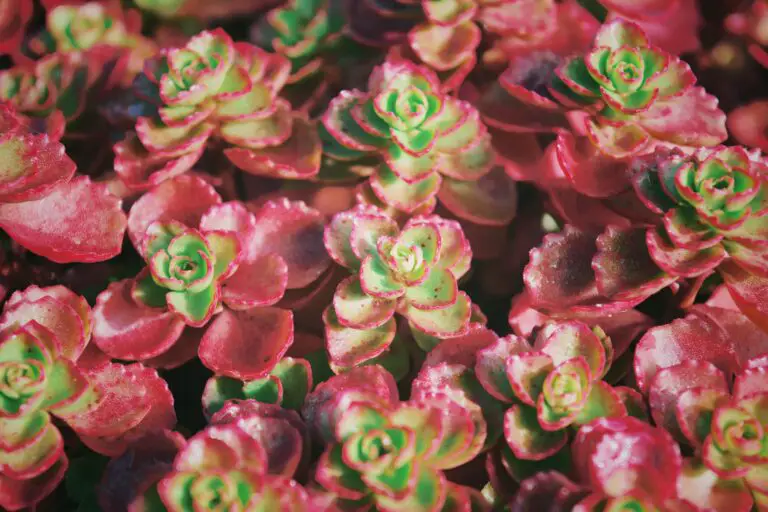
The spectacle doesn’t end with summer’s final curtain. As autumn arrives, ‘Sedum Dazzleberry’ transforms yet again, its foliage adopting rich, coppery tones that contrast stunningly with the fading perennials around it. The flowers, now aged to a rosy blush, add to this tapestry, endowing the garden with a warm, enduring glow. It’s in these cooler days that our unassuming hero shows its resilience, persisting when other plants succumb to the first frosts.
Even in the harshest act of winter, ‘Sedum Dazzleberry’ plays its part. The seed heads, aloft on sturdy stems, catch the winter light and frost with equal grace, providing an unexpected allure amidst the season’s dormancy. This hardy plant nestles under snow like a promise of the renewal to come, ensuring that the garden’s narrative never truly ends but quietly whispers of the next spring.
So, whether it’s the subtle shift of greys and greens in the spring, the jubilant pinks of summer, the copper kiss of fall, or the stoic beauty of winter, ‘Sedum Dazzleberry’ weaves a story in the garden that holds our attention throughout the year. This isn’t just a plant; it’s a year-round spectacle, giving gardeners a living mosaic that evolves with each passing season.
Companion Plants and Pairing Suggestions
When it comes to creating a garden oasis, every plant plays a pivotal role in the tapestry of textures, colors, and forms. Sedum ‘Dazzleberry’, with its vibrant rosettes, is a star player in this lush landscape. But who are its best teammates? Let’s dive into some stunning pairings that make ‘Dazzleberry’ shine even brighter.
Consider the airy plumes of ornamental grasses like Blue Fescue or Mexican Feather Grass as they dance in the breeze, providing a soft contrast to the sturdy succulence of ‘Dazzleberry’. By planting these together, you create a play of movement and stillness that’s as captivating as it is delightful.
Next, imagine the butterflies fluttering among the blooms of Echinacea or Black-eyed Susans, their vivid hues echoing the pink of ‘Dazzleberry’ come late summer. These perennials not only share a bloom time but also invite beneficial pollinators into your garden, creating a buzz of life amidst the serenity.
For a cooler palette, Lavender can be a dreamy companion. Its silvery foliage and svelte purple spikes bring a touch of Provence, as they punctuate the dense matting of ‘Dazzleberry’. Picture twilight in your garden, the lavender’s calming scent mingling with the bold sedum—it’s pure magic.
Now, let’s add some structural drama with the spiky accents of Russian Sage or Salvia. These plants tower gracefully, adding height and a splash of color that complements the ground-hugging ‘Dazzleberry’. Together, they create a layered effect that adds depth to your garden vista.
And, for a real-life example that brings all these elements together, envision a cottage garden scene. The Sedum ‘Dazzleberry’, nestled among tufts of grasses, spears of lavender, and dots of golden and purple flowers, creates a setting that’s both wild and curated—a true gardener’s delight.
So when you’re planning your garden tableau, think of ‘Dazzleberry’ as a versatile foundation. Whether edged with soft grasses, paired with vibrant blooms, or accented by aromatic herbs, it serves as the perfect backdrop for a symphony of garden companions that, together, compose an enchanting outdoor retreat.
Conservation and Ecological Benefits
When it comes to giving back to Mother Nature, Sedum Dazzleberry is a true gem in the garden. This vibrant groundcover doesn’t just sit there looking pretty—it’s a powerhouse when it comes to conservation and supporting local ecosystems. Let’s dig a little deeper into how this charming plant can transform your garden into an eco-haven!
Attracting a Buzz of Activity
Imagine a lazy, sunny afternoon in your garden, the air buzzing with life. Here’s a scene where Sedum Dazzleberry shines! Its clusters of ruby-red blossoms are like a beacon for pollinators. Bees, butterflies, and other beneficial insects can’t resist the allure of these flowers—and why would they? While they flit from flower to flower, they’re doing more than just enjoying the nectar—they’re playing a pivotal role in the survival of many plant species through pollination.
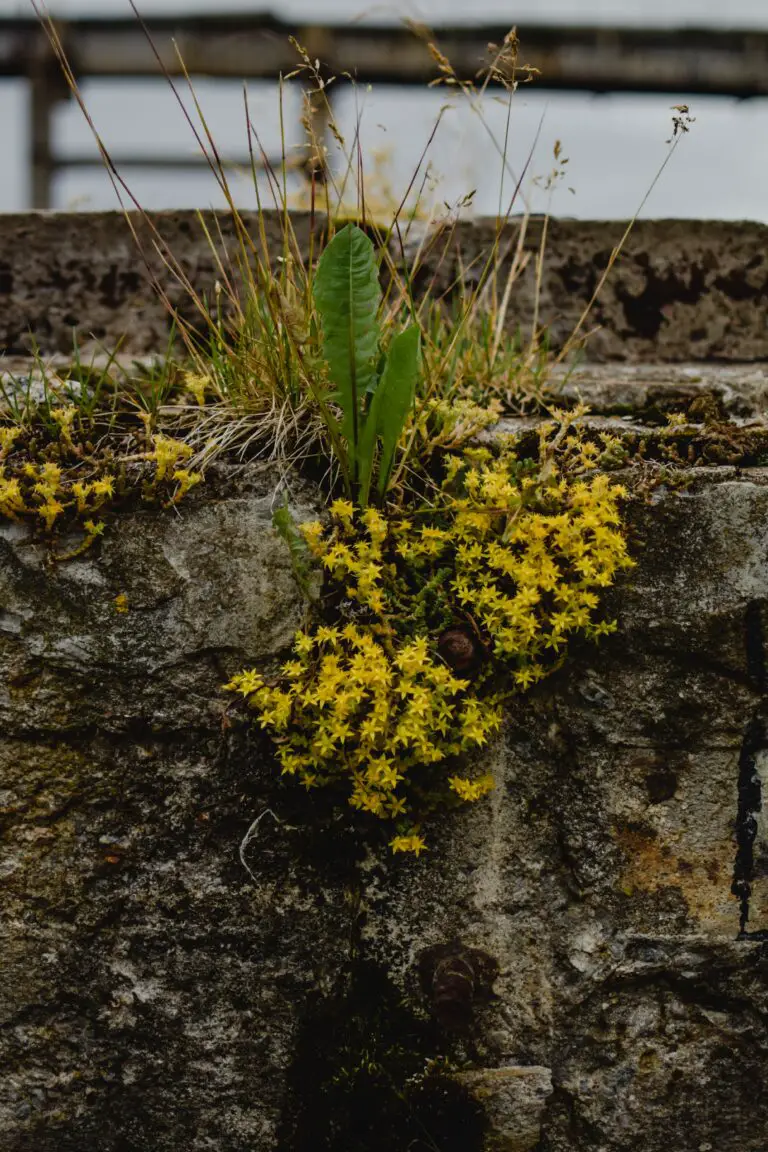
By introducing Sedum Dazzleberry to your garden, you’re crafting a sanctuary for these tireless workers. This isn’t just about producing the next generation of blossoms; it’s a critical component of our food supply and natural floral landscapes. It’s a small step for a gardener but a giant leap for insect-kind and the environment!
The Groundwork for Soil Conservation
No need for a ‘green thumb’ when it’s this easy to be green! Sedum Dazzleberry isn’t just low maintenance; it’s a hero when it comes to soil conservation. Its dense growth forms a living mulch, shielding the soil from the baking sun and reducing water evaporation.
But wait, there’s more! This sturdy succulent also helps prevent soil erosion. Its network of roots binds the soil, making it an excellent choice for sloping gardens where rain might otherwise wash away precious topsoil. Real-life garden savior stories abound; whether it’s preventing the local hillside from crumbling onto pathways or creating a lush emerald tapestry in spots where other plants wouldn’t dare to grow, Sedum Dazzleberry has got it covered—literally.
So, not only does this delightful groundcover bring a burst of color to your garden, but it also plays a crucial role in maintaining the ecological balance. Plant some Sedum Dazzleberry, and watch as your green oasis flourishes, all the while knowing you’re contributing to the conservation of our precious environment.
Troubleshooting Common Issues with Sedum Dazzleberry
Even the most resilient plants can have their off days—or seasons. Sedum Dazzleberry, with its vivid blooms and robust nature, is no exception. But don’t fret! With a keen eye and a bit of know-how, you’ll steer your groundcover back to its dazzling best. Let’s dig into the common quandaries you might encounter in your garden oasis.
Spotting the Signs: Pests and Pathogens
Picture this: one morning, you find your Sedum’s leaves looking more lace-like than usual. An alarming sign? Absolutely—a classic case of pest invasion, where culprits such as aphids or mealybugs have thrown a garden party at your plant’s expense. But it’s nothing you can’t handle. A gentle spray of insecticidal soap or neem oil, repeated every few days, makes an uninvited guest’s stay unpleasant. Remember, the key is consistency: be the bouncer your garden deserves.

Water Woes: Too Much or Too Little?
Imagine strolling through your garden and spotting Sedum Dazzleberry’s leaves turning yellow or dropping—a blatant SOS signal. Before you rush to water, pause. Could it be you’ve been overzealous with the hose? Sedum thrives on neglect when it comes to moisture; overwatering is their pet peeve. Conversely, if the plant screams ‘thirsty’ with wrinkled leaves, it’s time for a drink. Achieve watering wisdom and schedule a check-up only when the soil feels dry to the touch.
Climate Conundrums: Sunlight and Temperature
There’s a sweet spot for every plant, and for Sedum Dazzleberry, it’s a sun-soaked paradise. But what if your sedum starts sporting burnt tips or refuses to flower? It might be getting more tan than it bargained for. Protect your plants from scorching midday rays with a sunshade or strategically plant taller companions to cast a protective shadow. And when winter whispers its chilly tales, ensure your sedum has proper drainage to avoid cold, wet soil that can spell doom.
Being a garden detective is all about spotting trouble and knowing just the right move to correct course. With these insights, your Sedum Dazzleberry won’t just survive—it’ll thrive, adding a vibrant touch to your personal outdoor sanctuary.
Frequently Asked Questions
Embarking on a gardening adventure with Sedum Dazzleberry can be both exciting and filled with questions. Let’s dig into some of the most common inquiries gardeners encounter as they foster these vibrant groundcovers in their personal oasis.
What makes Sedum Dazzleberry a unique groundcover?
Sedum Dazzleberry is not your average groundcover. Imagine a tapestry of fleshy, water-storing leaves that burst into a spectacle of deep pink blooms come late summer. Unlike other groundcovers that shy away in colder temperatures, Dazzleberry sedum thrives, offering a year-round interest with its ever-changing hues and textures.
How do I plant and care for my Sedum Dazzleberry?
Whether you’re tucking them into a rock garden or letting them cascade from a hanging basket, success with Sedum Dazzleberry starts with the right footing—well-draining soil is a must. Full sun will coax out the brightest coloration, and occasional watering will keep them plump and happy. A real-life gardening tip? These sedums can sail through droughts like champs, but they’ll need a drink during prolonged dry spells.
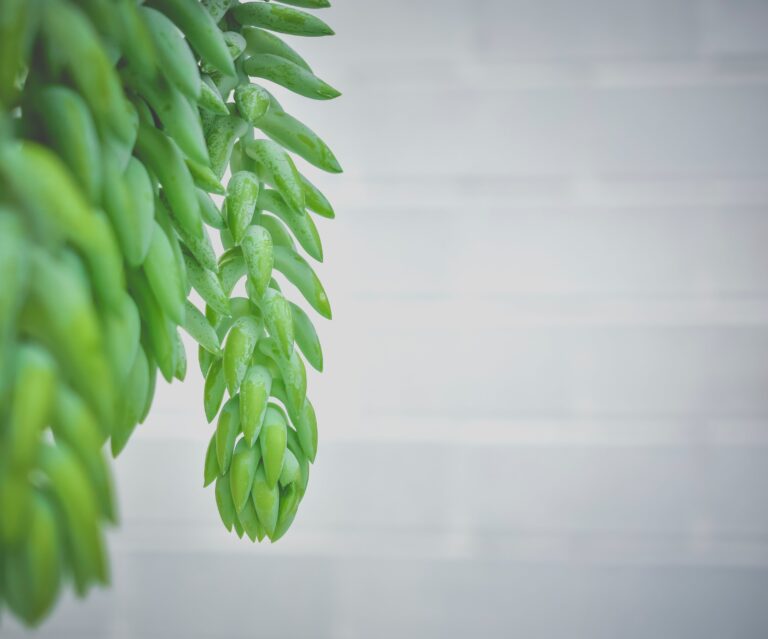
When is the best time to plant Sedum Dazzleberry?
Strike while the soil is warm! Spring offers a growth spurt for young sedums, allowing their roots to establish before winter. If you’ve missed the spring window, early fall planting is also a green thumb’s go-to, ensuring a snug, settled in period before the frost sets a silent stage.
How do I propagate Sedum Dazzleberry for more plants?
Propagating Sedum Dazzleberry can be almost as pleasing as watching them grow. Snip a few stems, let the ends callus over for a couple of days, then gently nestle them into moist potting mix. Before you know it, they’ll be sprouting new roots, ready to expand your sedum sanctuary.
Are there any pests or diseases I should be wary of?
Sedum Dazzleberry is a fortress against most garden assailants, but it’s not impervious. Keep an eye out for mealybugs taking refuge in the nooks of your plants. And while it’s rare, overwatering can lead them down a path of root rot. Remember, these plants are more equipped to fight off a drought than a deluge.
Can Sedum Dazzleberry survive winter in cold climates?
Yes, and it does it with a flair of frost-tinted foliage! Sedum Dazzleberry is a hardy succulent, ready to brace the chill down to USDA Zone 4. As the mercury dips, this groundcover snuggles into the earth, emerging in spring with renewed vigor and a display that’ll have the neighbors peeking over the fence.
